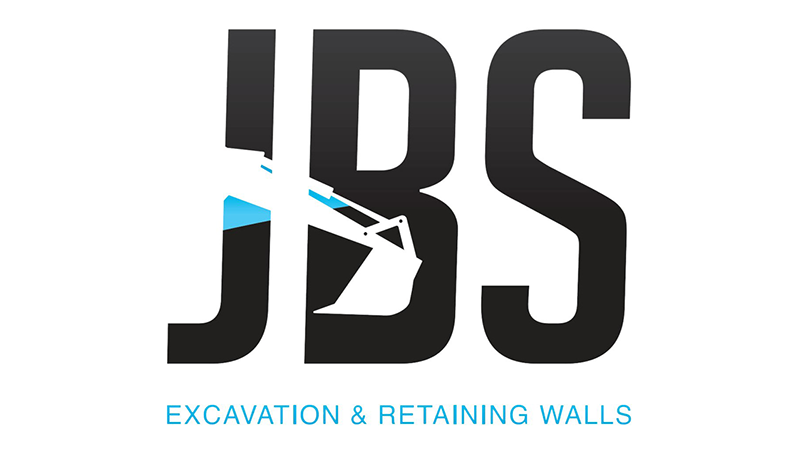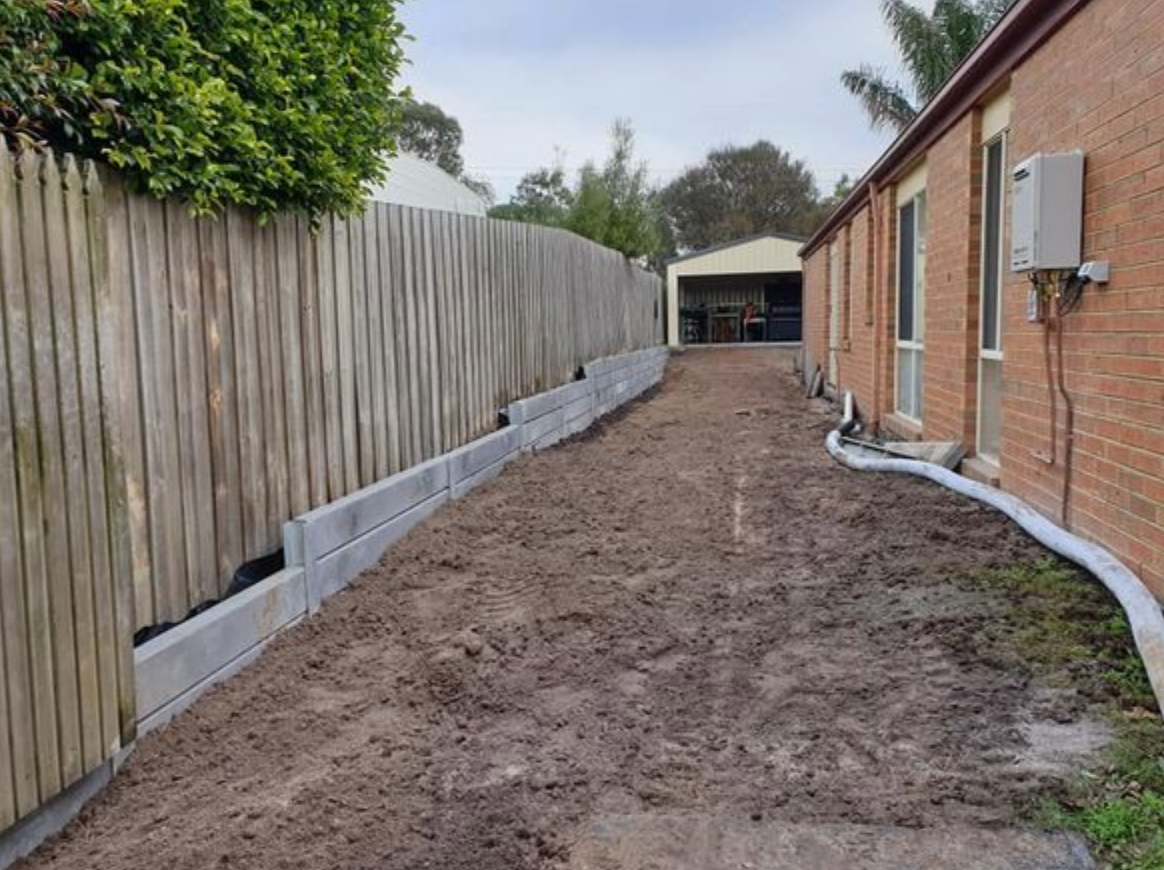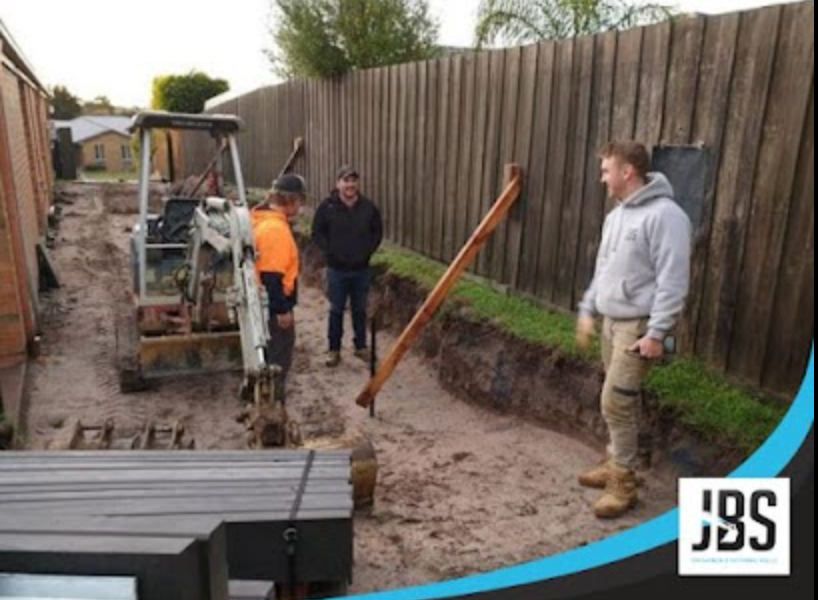Understanding the Conditions Requiring a Backyard Retaining Wall
Australia - February 23, 2024 / JBS Excavation and Retaining Walls /
Retaining Walls: A Guide For Local Residents In Officer, Victoria
If you live in Officer or surrounding areas, chances are you have come across the need to consider a retaining wall. When considering terrain alterations, such as realizing your backyard needs a retaining wall, you should consider engaging a professional such as JBS Walls. This is critical when there are signs of uneven levels of land and soil sediment accumulation in specific areas. Contrary to common knowledge, these hints are more than aesthetic nuisances; they symbolize soil erosion, needing immediate attention via soil retention measures, such as building a retaining wall. Now, isn't it interesting how a simple observation could lead us toward maintaining a healthier landscape?
Your backyard may require a retaining wall if you notice signs of soil erosion, uneven ground, or visible slope instability. Installing a retaining wall can help prevent further soil shifting and collapsing and create more usable space in your yard. It's essential to have a professional assessment to determine the best course of action for your specific needs.
Identifying Soil Erosion and Stability Issues
Soil erosion and stability issues can quietly wreak havoc in your backyard. They can creep up on you, causing significant problems if not tackled proactively. One of the leading indicators of erosion and instability is exposed tree roots. As you begin to notice more tree roots surfacing, it's a clear indication that the soil is gradually eroding, weakening the landscape's foundation and posing a risk to tree health.
Furthermore, the sudden formation of gullies or small channels in your yard after heavy rainfall signifies soil being washed away, causing erosion. In such cases, a retaining wall can stabilize the soil and prevent further erosion while providing crucial structural support. Uneven land levels or accumulating soil sediment in lower areas are additional red flags that should prompt consideration for installing a retaining wall.
For instance, picture this scenario: After heavy rain, you notice small valleys forming in specific parts of your yard. These are signs that the soil is washing away and accumulating in lower areas, resulting in erosion. Now consider how a retaining wall could effectively combat this issue by holding back the soil and preventing further buildup in lower sections of your yard.
It's crucial to remain vigilant for these warning signs because they indicate the need for soil retention and stabilization. Taking action early on can prevent more serious problems from arising.
Retaining walls are barriers that hold back soil, stabilize slopes, and provide essential support to prevent further erosion. By promptly addressing these signs and considering the installation of a retaining wall, you can effectively mitigate soil erosion and maintain the integrity of your backyard landscape for years to come. Understanding when a retaining wall is needed is just the beginning. Let's explore these structures' practical functions in transforming your outdoor space.
Practical Functions of a Retaining Wall
A retaining wall is more than just a static structure—it serves a range of practical functions that can significantly enhance your backyard. Let's take a closer look at how a well-designed retaining wall can be a game-changer for your outdoor space.
Soil Retention
One of the primary functions of a retaining wall is to prevent soil erosion and retain soil on slopes. Without a retaining wall, the soil can easily slide down, causing all kinds of problems, from damaging structures to posing safety risks. By holding back the earth, a well-constructed retaining wall provides indispensable support, maintaining the structural integrity of the land. It essentially acts as a guardian, keeping the soil in place and preventing it from spilling onto lower areas.
Water Diversion
In addition to providing stability for the soil, a retaining wall is also crucial for managing water flow within your property. Diverting rainwater away from sloped areas and preventing excessive runoff help minimize soil erosion. This protects the landscape and safeguards any nearby structures from potential water-related damage. A retaining wall is an effective barrier against erosion, ensuring that your backyard remains intact and safe from water-induced hazards.
Creating Usable Space
Another practical function of a retaining wall is its ability to transform steep and uneven terrain into usable space. By leveling off sloped areas, a well-placed retaining wall can create additional room for various purposes, such as setting up gardens, creating seating areas, or even developing recreational spaces. This newfound level ground opens up a world of possibilities for enhancing the functionality and aesthetics of your backyard. Instead of struggling with uneven surfaces, you can now make the most of every inch of your outdoor space, all thanks to the strategic placement of a retaining wall.
Understanding these essential functions sheds light on how a retaining wall can be an indispensable asset for your backyard. But those are just the beginning—let's further explore how such structures offer benefits beyond their immediate practical applications.
Benefits of Installing a Retaining Wall
You might wonder what's in it when you install a retaining wall. Well, there are several fantastic benefits to consider.
Erosion Prevention
One of the most important benefits of a retaining wall is its ability to prevent erosion. It's like having nature's security system against soil erosion. When heavy rain hits, especially on sloped areas, soil can easily wash away, causing damage to your property and potentially endangering your family's safety. A well-designed retaining wall keeps that soil in place, maintaining the integrity of your landscape and protecting against erosion. It's like a shield for your property, standing strong against the forces of nature.
Property Protection
Beyond erosion prevention, retaining walls provide essential protection for your property. They shield your structures from potential damage caused by soil shifting and collapsing. By maintaining stability and support, these walls enhance safety and safeguard your property from the harsh impact of nature. In areas where the land may not be as stable or prone to landslides, having a strong retaining wall can make all the difference in maintaining the structural integrity of your property.
Aesthetic Value
It's not all about function—retaining walls contribute significantly to the aesthetic appeal of your outdoor space. These structures can be visually stunning and add a captivating element to your landscape design. Imagine stone or brick walls elegantly winding through your garden or forming terraces throughout your backyard. The visual impact is undeniable. And here's an interesting fact: By enhancing the overall look and feel of your outdoor space, a well-designed retaining wall can increase the value of your property. It's like adding a touch of elegance and charm that can't go unnoticed.
So, think about it this way: you get functionality that safeguards your property against nature’s forces while adding beauty to your landscape. It’s a two-for-one deal that can transform the look and feel of your entire outdoor space.
With these remarkable benefits considered, it’s clear that installing a retaining wall goes far beyond mere structure—it's an investment in your property's safety and aesthetics.
Now that we've unveiled the substantial advantages of a retaining wall let's focus on recognizing the early signs indicating the necessity for installing this valuable feature.
Recognizing the Need for Retaining Walls
Imagine a backyard where the ground steeply slopes downwards, perhaps due to heavy rainfall or the natural lay of the land. In such cases, a retaining wall becomes crucial. If the slope of your yard is steeper than 4:1—that is, for every 4 units of horizontal distance, the yard drops by 1 unit—there's a real risk of soil erosion and landslides.
Without intervention, heavy rains could wash away the soil or cause significant damage to the landscape. A well-constructed retaining wall is a barrier against these threats, stabilizing the soil and preventing potential damage.
Let's consider a property located on a hillside with an angle greater than 4:1. In this scenario, gravity can cause soil to shift and move downhill gradually. If not appropriately supported, this can lead to unstable ground and increased erosion risk. By installing a retaining wall, you're protecting your property and creating more usable space in your yard. It could be an ideal platform for terraces or outdoor patios, making the most of your outdoor living area.
Here's another thing to consider - if you've noticed any signs of settling or shifting in the soil, it could indicate that a retaining wall is needed. Other signs include structural damage or cracks in existing walls that suggest an unstable foundation, which could endanger nearby structures.
A professional inspection to discern whether a retaining wall is required always makes sense, especially when dealing with properties prone to land movement or near water bodies with frequent soil shifting. This will help identify areas requiring additional support to prevent soil erosion and ensure structural integrity.
So as we've explored, recognising the need for retaining walls involves assessing the landscape's condition and understanding potential risks caused by slopes exceeding certain angles or locations prone to soil movement.
Constructing Retaining Walls: Essential Tips
Constructing a retaining wall is no small task—it requires careful planning and execution to ensure the safety and integrity of your landscape. Here are some essential tips to consider when building a retaining wall to address the specific needs of your landscape.
Professional Assessment
Before diving into the construction process, it's crucial to have the site professionally assessed. A professional assessment will help determine the most suitable design and structure for the retaining wall based on the landscape's specific needs. Each landscape has unique characteristics, such as soil type, slope angle, and drainage patterns, which must be carefully considered to ensure the effectiveness and longevity of the retaining wall.
Professional assessors can analyze the soil composition, evaluate the slope stability, and identify any existing drainage issues. This enables them to recommend the appropriate wall height, material options, and reinforcement measures for optimal performance, ensuring a solid foundation for a retaining wall that will function effectively and withstand the pressures exerted by the surrounding landscape.
Proper Drainage System
One of the critical aspects of a well-constructed retaining wall is its drainage system. It's imperative to ensure the retaining wall incorporates an effective drainage system to manage water runoff and prevent hydrostatic pressure from building up behind it. Without proper drainage, water accumulation can exert excessive pressure on the wall, leading to structural failure and potential damage to your property.
To achieve adequate drainage, perforated pipes can be installed behind the wall to direct water away from the structure. Additionally, granular backfill materials with high permeability can facilitate proper water drainage while providing structural support, safeguarding the structural integrity of your retaining wall, and preventing water-related damage.
Compliance with Building Codes
When undertaking any construction project—retaining walls included—adhering to local building codes and regulations is paramount. Compliance with building codes ensures the structural integrity and safety of the retaining wall. Building codes often stipulate specific requirements regarding wall height, material specifications, reinforcement techniques, and construction methods to guarantee safety and stability.
For instance, some areas may have regulations concerning seismic considerations for retaining walls in earthquake-prone regions. By adhering to these standards, you're ensuring legal compliance, such as local council guidelines for construction and permits, and prioritizing the safety of your property and those around it.
By following these essential tips during construction, you can establish a durable and reliable retaining wall that effectively addresses your landscape's unique needs while ensuring safety and longevity.
JBS Excavation & Retaining Walls: Your Partner in Retaining Wall Services in Officer
If you find yourself leaning towards retaining walls to address soil erosion and stability issues in your officer's backyard, consider enlisting the expertise of JBS Excavation & Retaining Walls. As a leading provider of retaining wall services in Officer, JBS Excavation & Retaining Walls brings a wealth of experience and a commitment to quality craftsmanship.
Retaining walls from JBS Excavation & Retaining Walls are designed to provide structural support and enhance the visual appeal of your outdoor space. Whether you're dealing with sloped terrain or seeking to create defined garden areas, JBS Excavation & Retaining Walls can tailor their services to meet your specific needs.
Why Choose JBS Excavation & Retaining Walls?
- Expertise: With a team of skilled professionals, JBS Excavation & Retaining Walls has a proven track record in designing and constructing retaining walls that stand the test of time. Their expertise ensures that your retaining wall will effectively address soil erosion while complementing your landscape design.
- Versatility: JBS Excavation & Retaining Walls offers a variety of materials and design options, allowing you to customize your retaining wall to suit your aesthetic preferences. Whether you prefer the classic look of stone or the modern appeal of concrete, they have the expertise to deliver.
- Quality Construction: JBS Excavation & Retaining Walls prioritizes using durable materials and follows industry best construction practices. This commitment to quality ensures that your retaining wall serves its functional purpose and adds long-lasting value to your property.
- Comprehensive Services: Beyond construction, JBS Excavation & Retaining Walls provides comprehensive services, including site assessment, design consultation, and ongoing maintenance. They work closely with you to understand your goals and deliver a retaining wall solution that exceeds your expectations.
Are You Looking for Retaining Wall Services in Officer?
If you're actively seeking retaining wall services in Officer, JBS Excavation & Retaining Walls is ready to assist. Whether for a residential or commercial project, their team can handle various complexities and deliver results that align with your vision.
Contact JBS Excavation & Retaining Walls today to discuss your retaining wall needs and explore how their expertise can contribute to the stability, functionality, and beauty of your Officer backyard. Don't compromise on quality—choose JBS Excavation & Retaining Walls for reliable and professional retaining wall services.

Contact Information:
JBS Excavation and Retaining Walls
,
Australia
Brenton Jones
+61 430 508 502
https://www.jbswalls.com.au/
Original Source: https://www.jbswalls.com.au/understanding-the-conditions-requiring-a-backyard-retaining-wall


